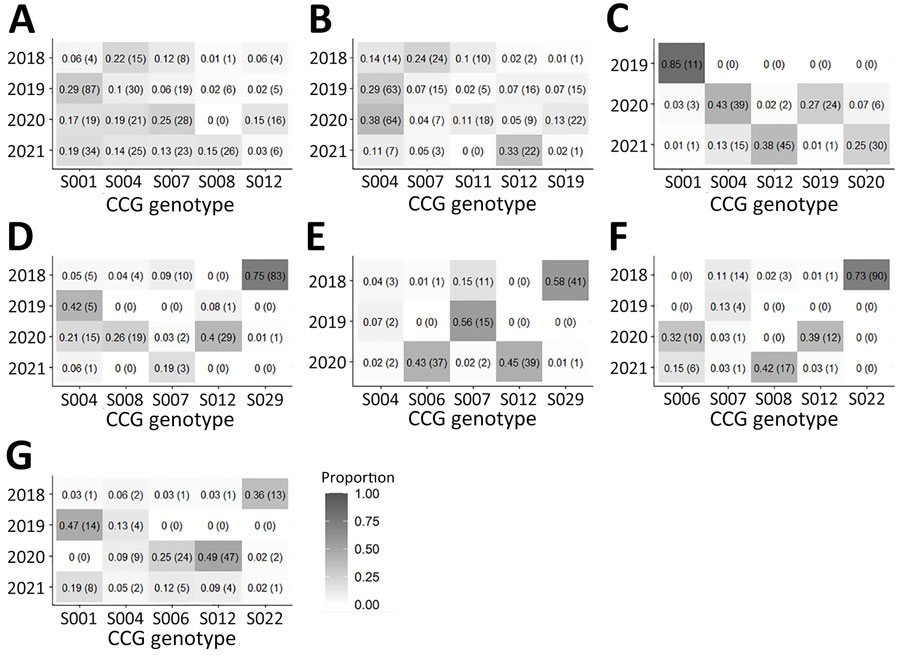Volume 31, Number 2—February 2025
Research
Cyclospora Genotypic Variations and Associated Epidemiologic Characteristics, United States, 2018–2021
Figure 3

Figure 3. Heatmaps illustrating the proportions of the top 5 most prevalent CCGs in each of the 7 states with highest number of specimens in study of Cyclospora genotypic variations and associated epidemiologic characteristics United States, 2018–2021. A) New York; B) Texas; C) Florida; D) Illinois; E) Iowa; F) Wisconsin; G) Minnesota. Values within each box represent the percentage of the total number of specimens within a state for a given year. Numbers in parentheses represent the corresponding number of specimens. Darker shades represent higher proportions. The total number of specimens submitted per year is as follows: New York, 67 (2018), 297 (2019), 110 (2020), 177 (2021); Texas, 98 (2018), 219 (2019), 168 (2020), 66 (2021); Florida 0 (2018), 13 (2019), 90 (2020), 118 (2021); Illinois, 111 (2018), 12 (2019), 73 (2020), 16 (2021); Iowa, 71 (2018), 27 (2019), 87 (2020), 0 (2021); Wisconsin, 123 (2018), 30 (2019), 31 (2020), 40 (2021); Minnesota, 36 (2018), 30 (2019), 95 (2020), 43 (2021). CCG, cluster consensus genotype.
1These senior authors were co–principal investigators.